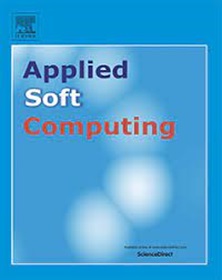利用可学习的特征对齐和基于注意力的数据增强技术处理古文献中的数据问题
IF 7.2
1区 计算机科学
Q1 COMPUTER SCIENCE, ARTIFICIAL INTELLIGENCE
引用次数: 0
摘要
由于书写风格的多样性和严重的类别不平衡,识别古代草书手写字符面临着独特的挑战。这种不平衡导致少数字类的误分类率高于多数字类。为了应对这些挑战,我们提出了一个新颖的框架,该框架整合了可学习通道和空间注意力模块,以有效地调整源域和目标域之间的特征,从而获得更好的表征效果。我们的方法包含一个可学习的顺序特征对齐过程,该过程可根据数据的具体特征进行动态调整,从而增强知识的跨域转移。此外,我们还引入了基于注意力的增强模块,以扩大尾类的影响。该模块利用类激活图来识别和增强判别特征,确保模型关注语义最丰富的区域,尤其是少数类。因此,它能使少数类的权重规范与多数类的权重规范保持一致,从而有效缓解因类分布不平衡而造成的限制。这种方法能有效缓解古代手写文档中字符分布不平衡所带来的限制。所提出的方法提高了 CCR、汉字、Nancho 和 Kuzushiji 数据集的准确率。本文章由计算机程序翻译,如有差异,请以英文原文为准。
Learnable feature alignment with attention-based data augmentation for handling data issue in ancient documents
Recognizing ancient cursive handwritten characters presents unique challenges due to the diversity of writing styles and significant class imbalances, where some characters have disproportionately more samples than others. This imbalance leads to higher misclassification rates for minority classes compared to majority classes. To address these challenges, we propose a novel framework that integrates learnable channel and spatial attention modules to effectively align features between source and target domains for better representation. Our approach incorporates a learnable sequential feature alignment process that dynamically adjusts to the specific characteristics of the data, enhancing the transfer of knowledge across domains. Furthermore, we introduce an attention-based augmentation module to amplify the influence of tail classes. This module leverages class activation maps to identify and augment discriminative features, ensuring the model focuses on the most semantically rich regions, particularly for minority classes. As a result, it aligns the weight norms of minority classes with those of majority classes, effectively mitigating the limitations posed by imbalanced class distributions. This approach effectively mitigates the constraints posed by imbalanced character distributions in ancient handwritten documents. The proposed method increases the accuracy for the CCR, Hanja, Nancho, and Kuzushiji datasets.
求助全文
通过发布文献求助,成功后即可免费获取论文全文。
去求助
来源期刊

Applied Soft Computing
工程技术-计算机:跨学科应用
CiteScore
15.80
自引率
6.90%
发文量
874
审稿时长
10.9 months
期刊介绍:
Applied Soft Computing is an international journal promoting an integrated view of soft computing to solve real life problems.The focus is to publish the highest quality research in application and convergence of the areas of Fuzzy Logic, Neural Networks, Evolutionary Computing, Rough Sets and other similar techniques to address real world complexities.
Applied Soft Computing is a rolling publication: articles are published as soon as the editor-in-chief has accepted them. Therefore, the web site will continuously be updated with new articles and the publication time will be short.
 求助内容:
求助内容: 应助结果提醒方式:
应助结果提醒方式:


